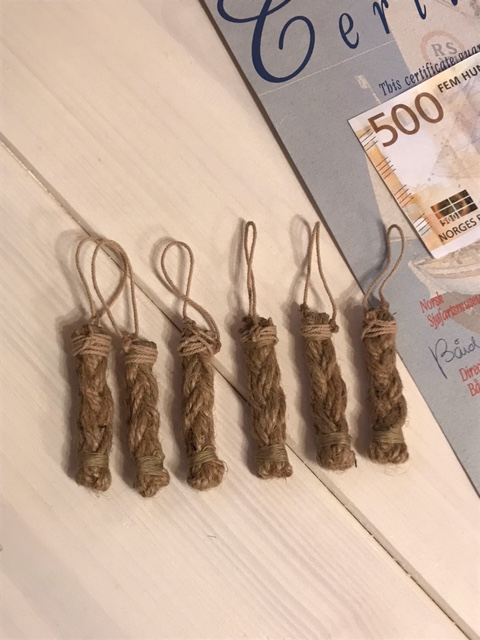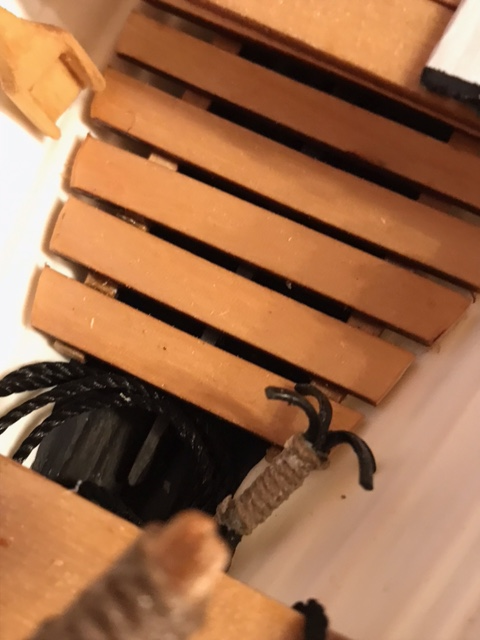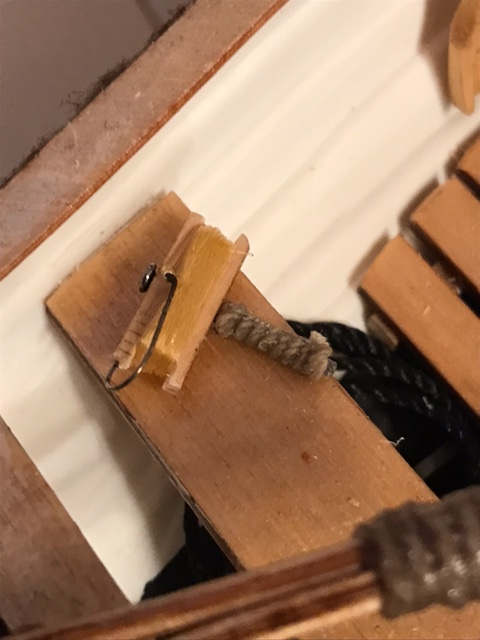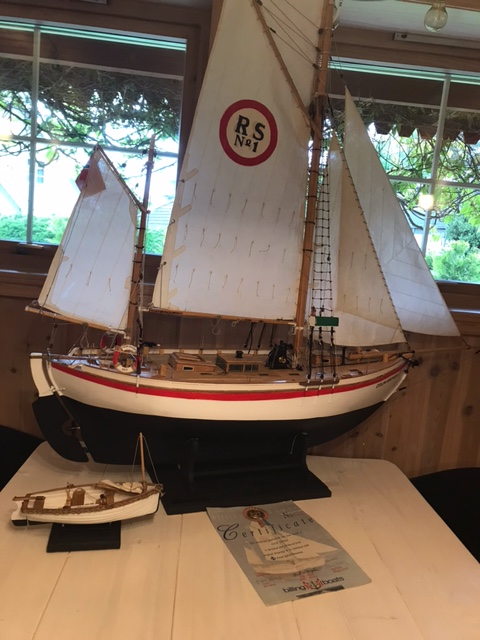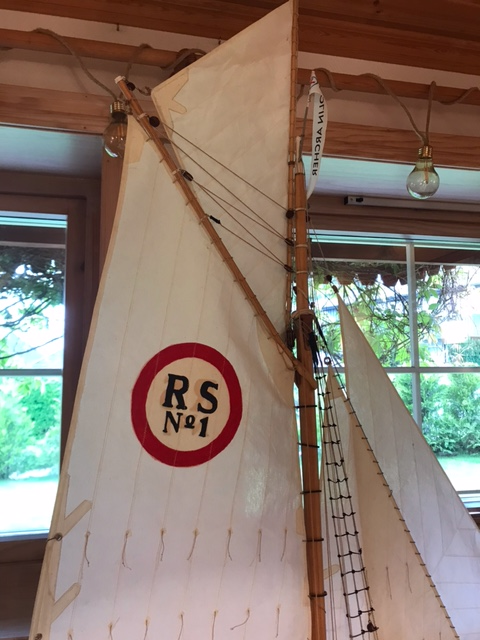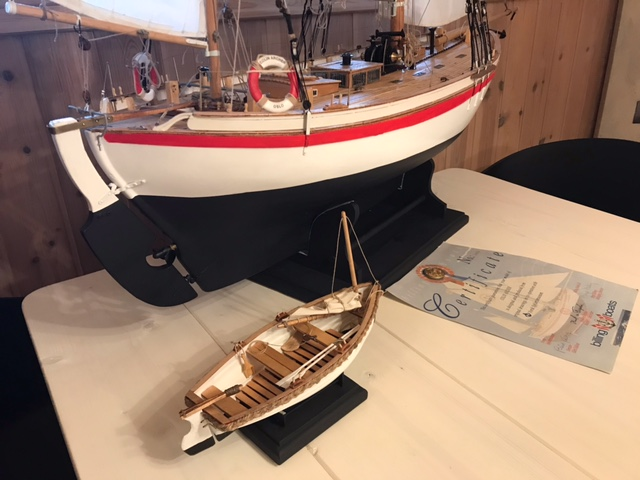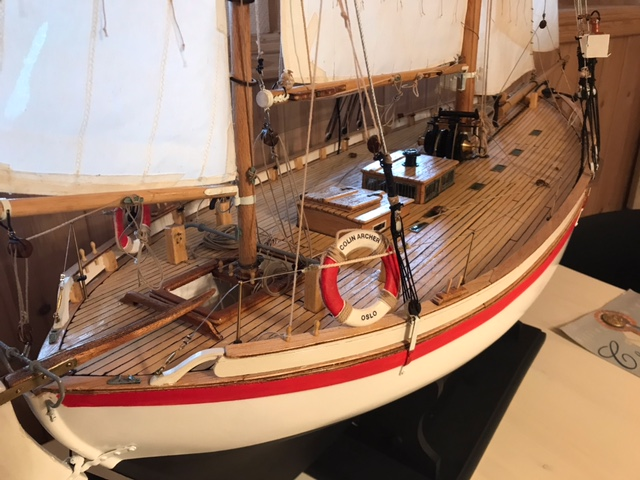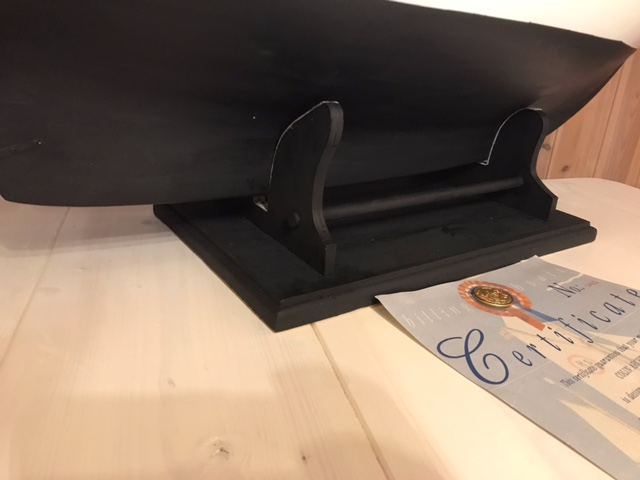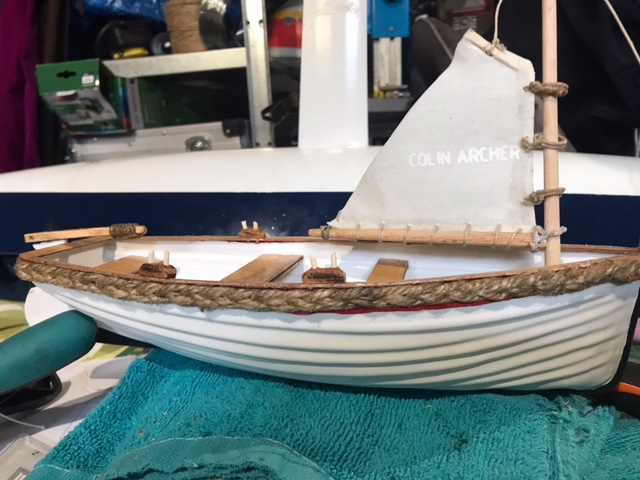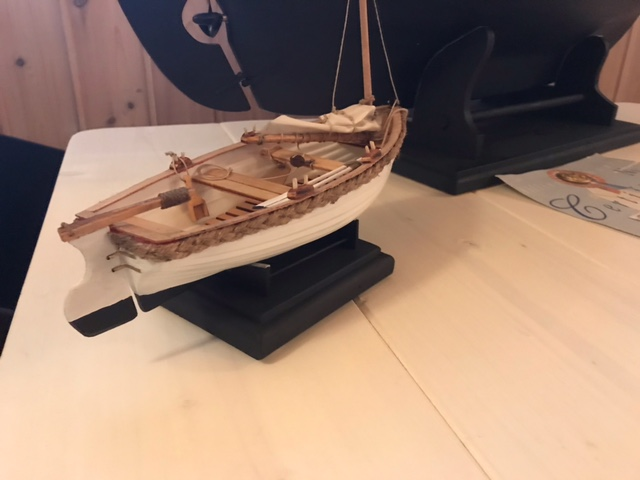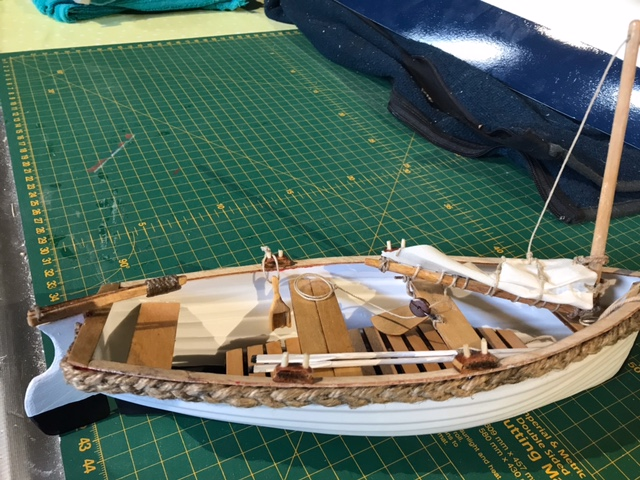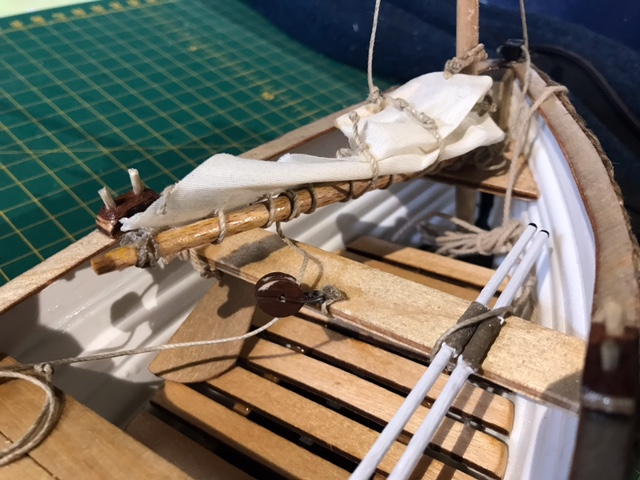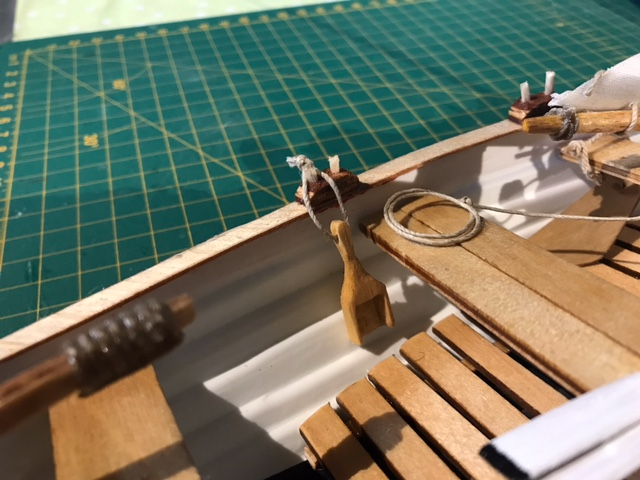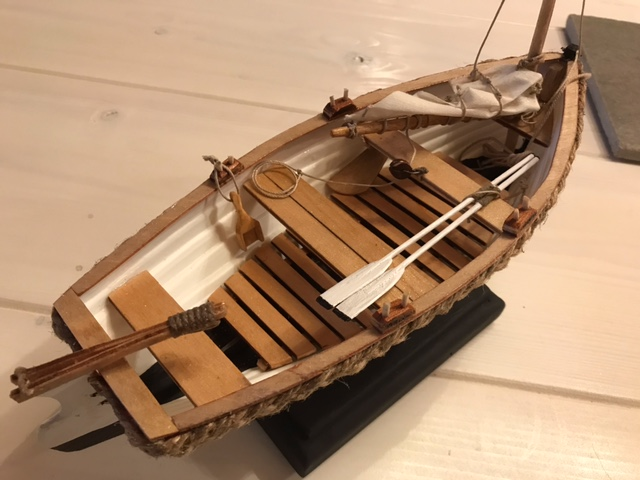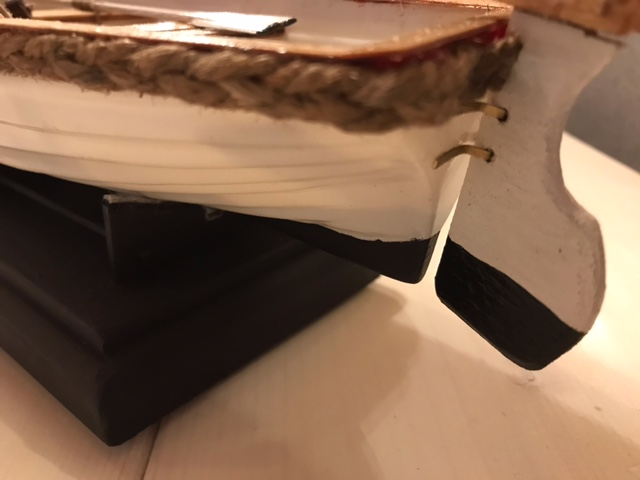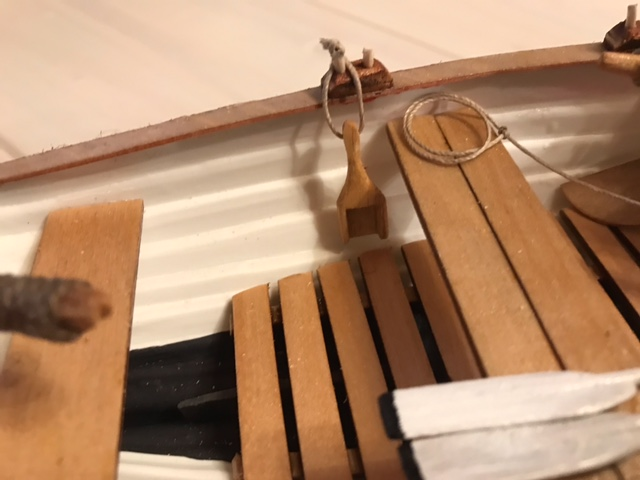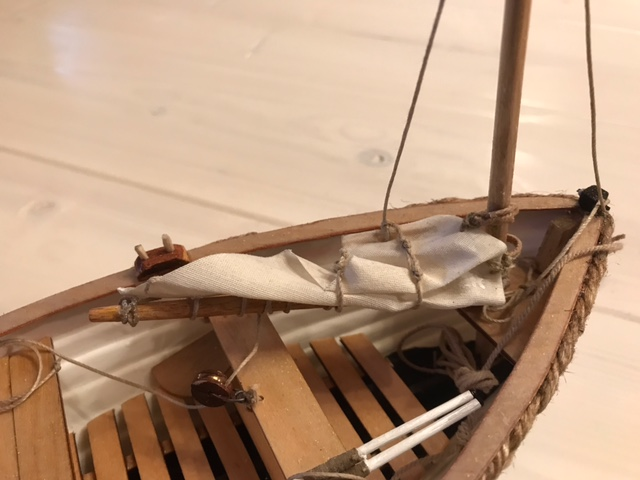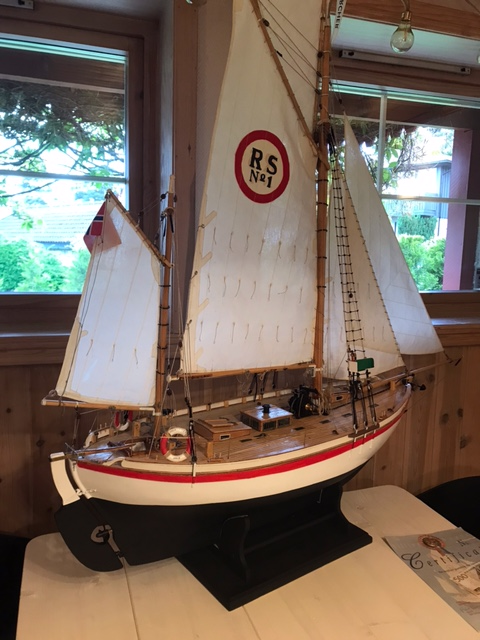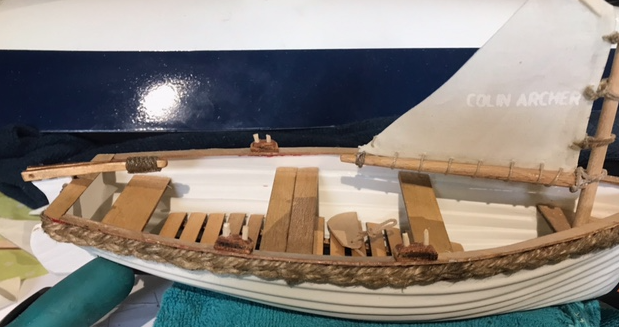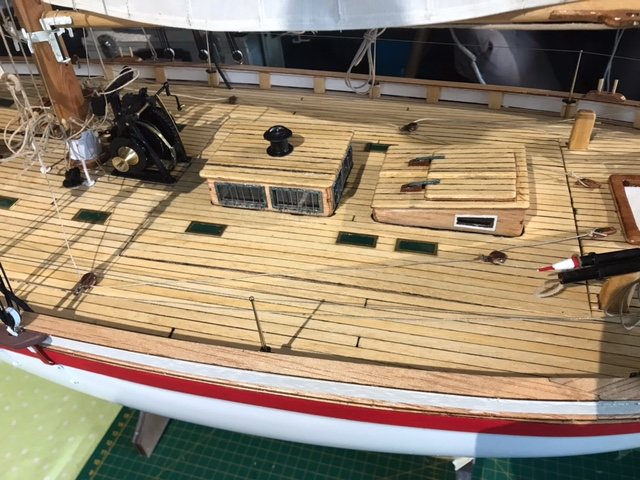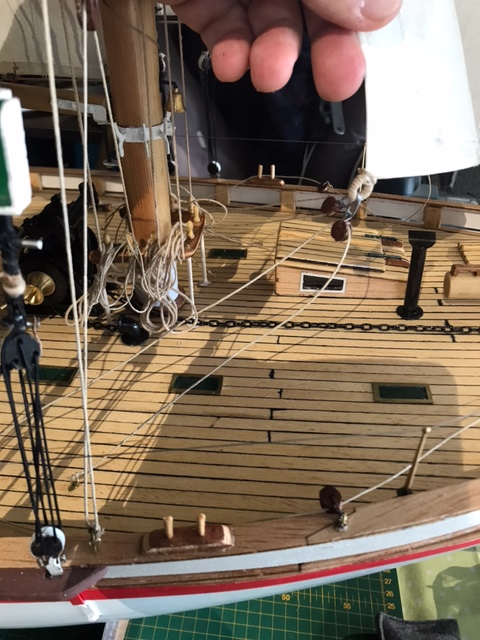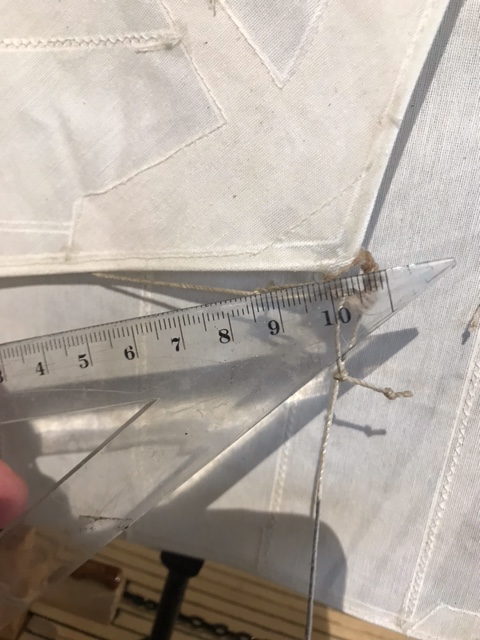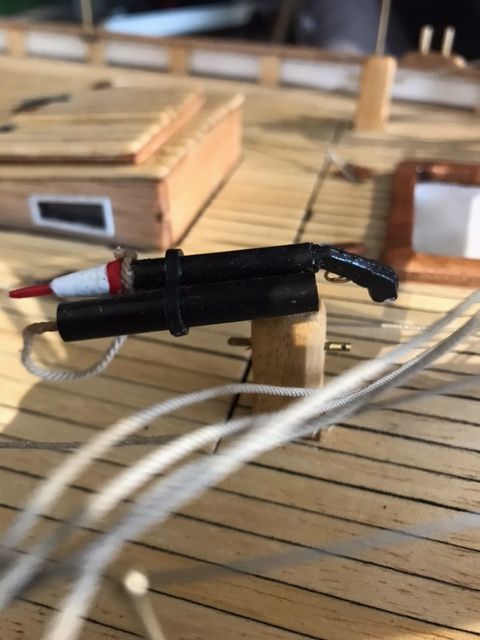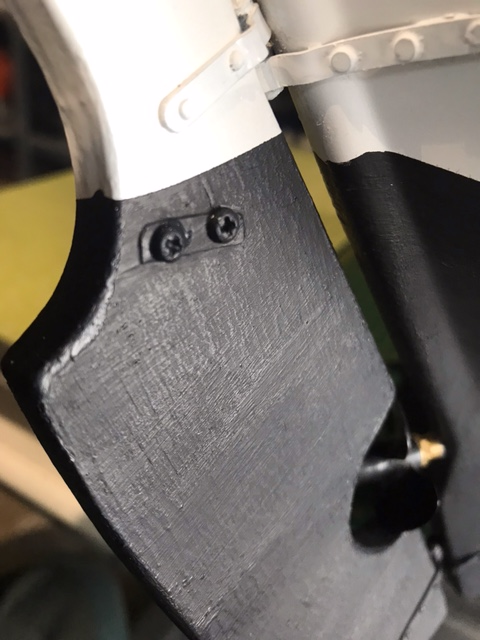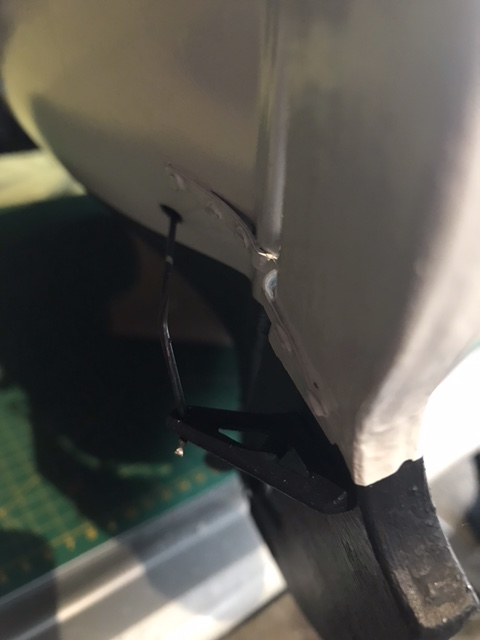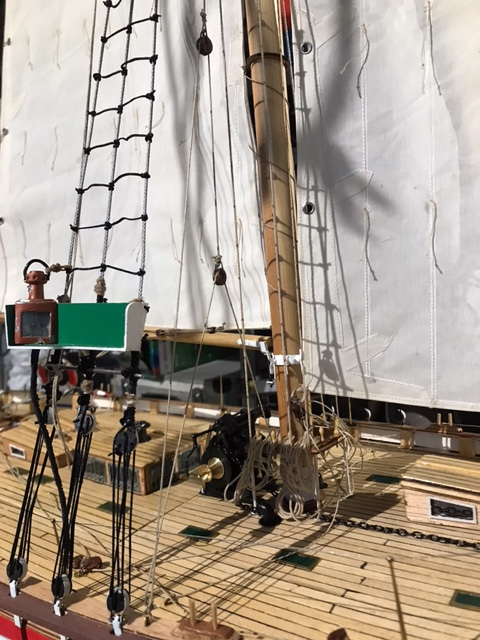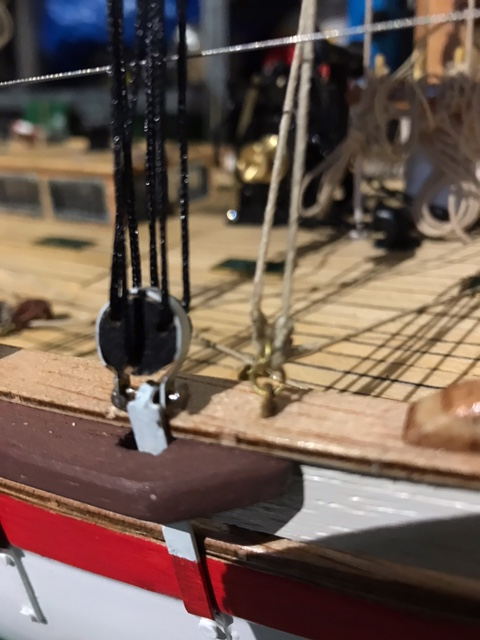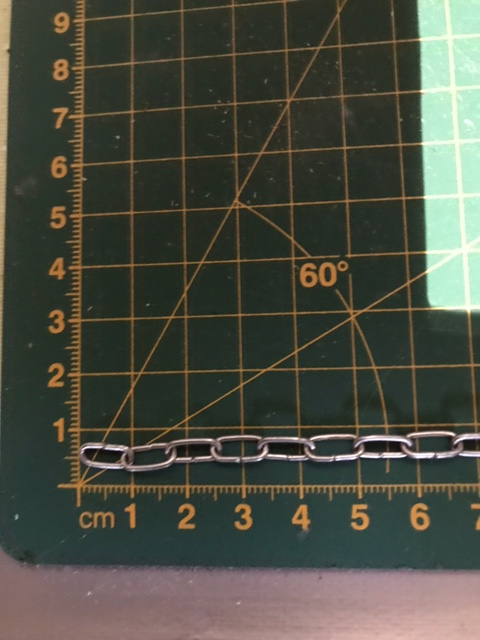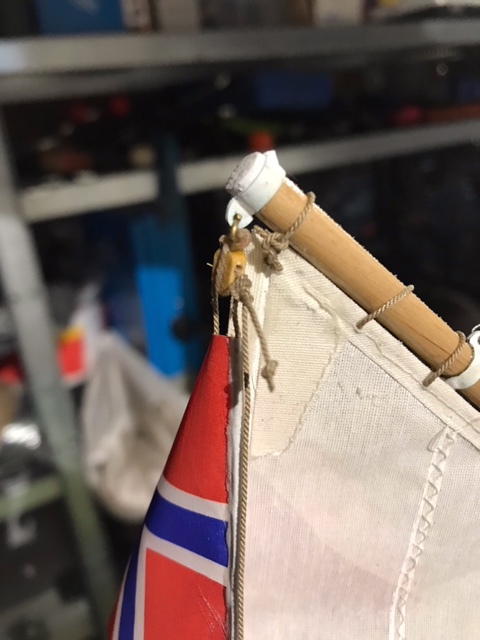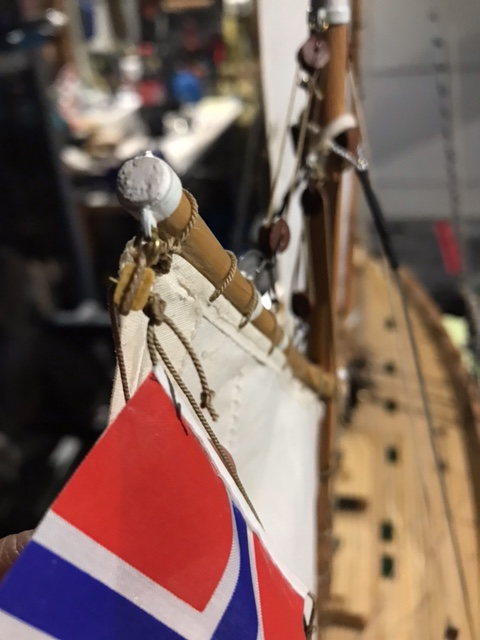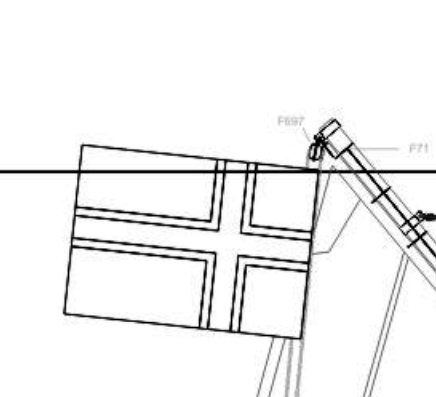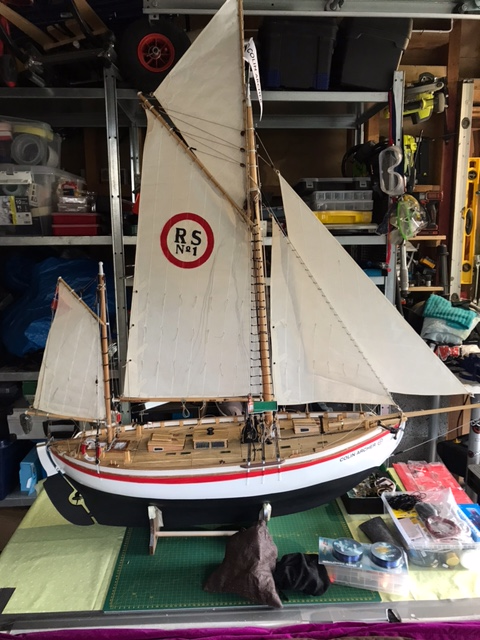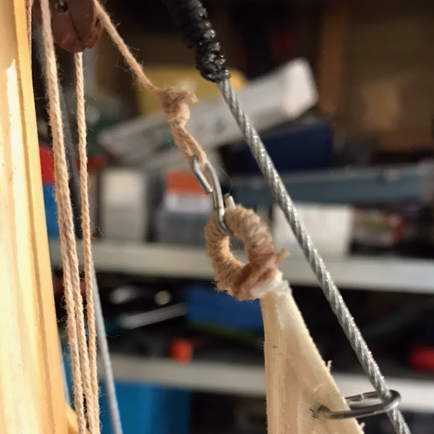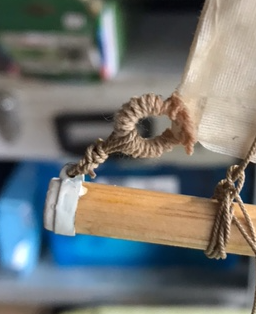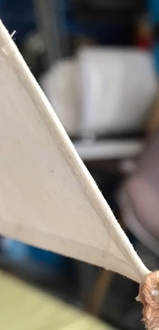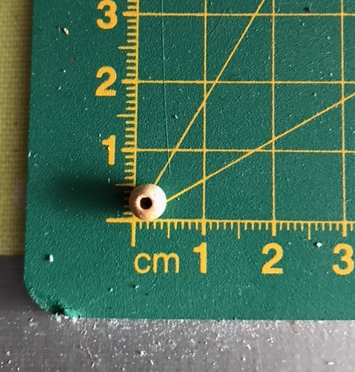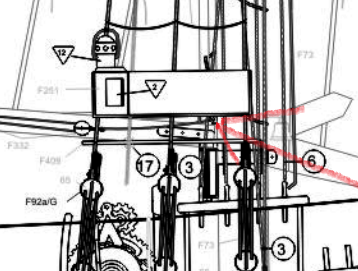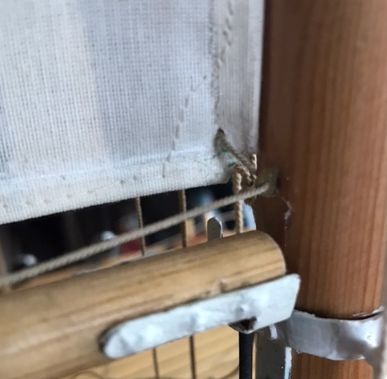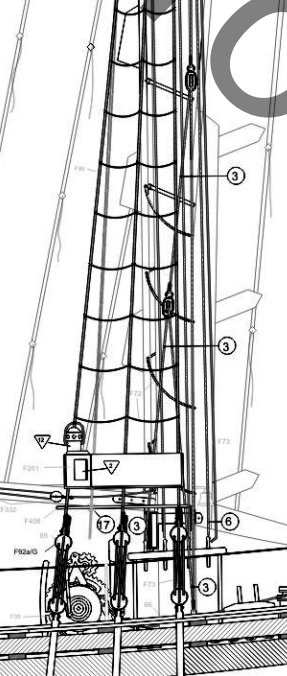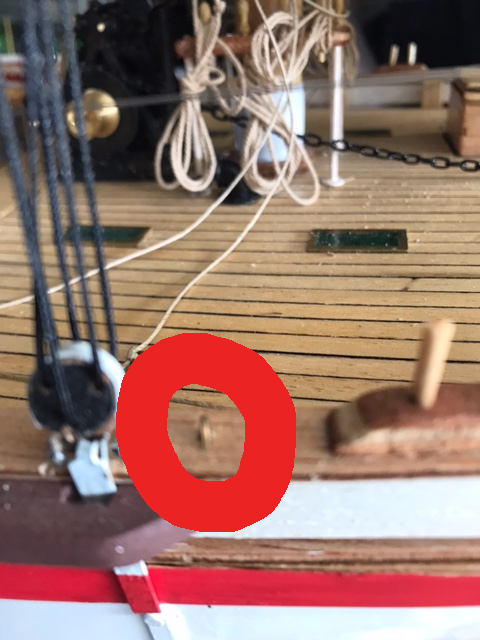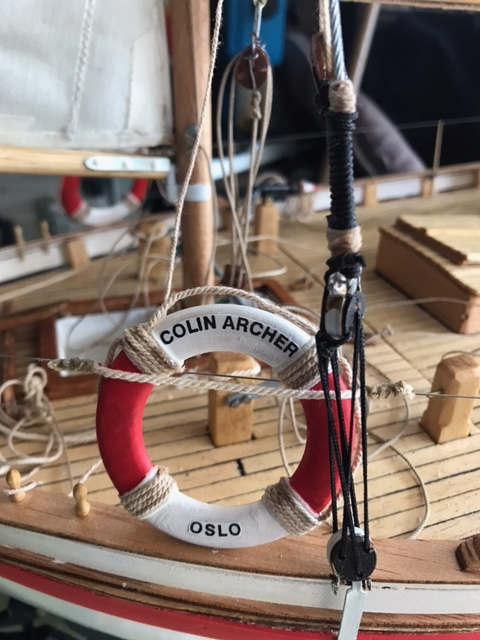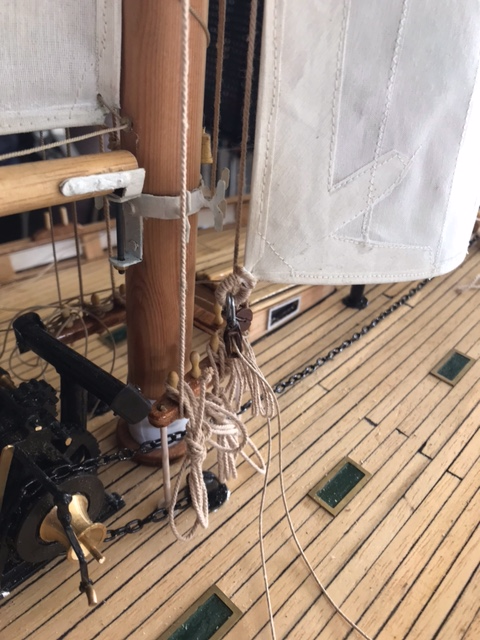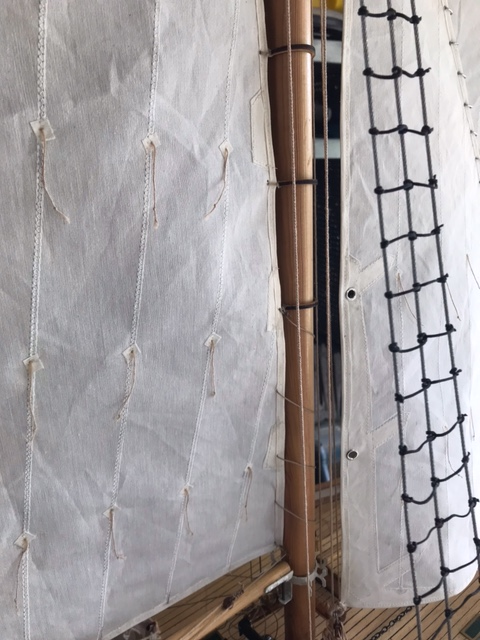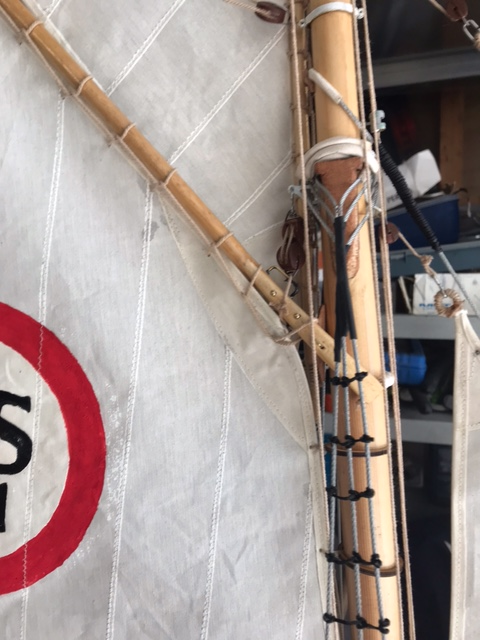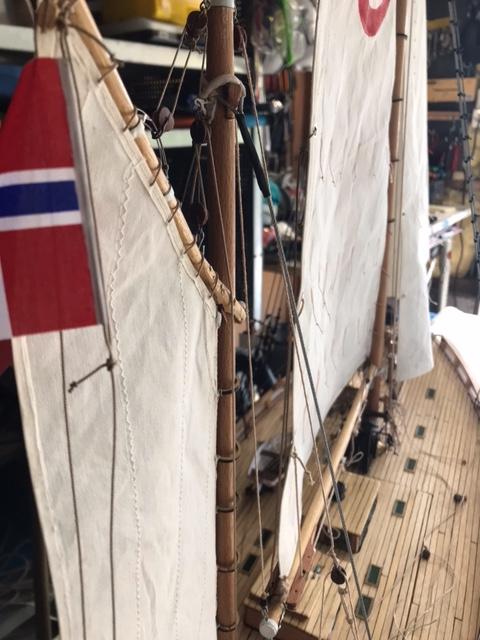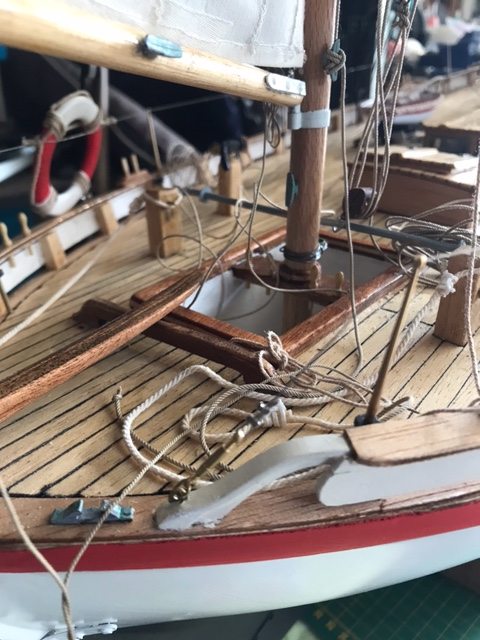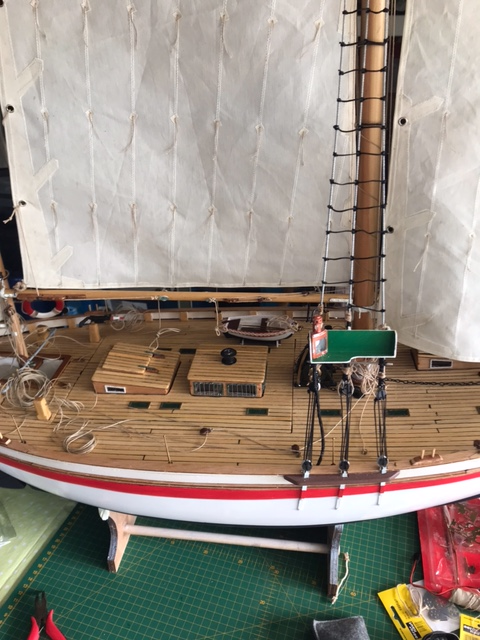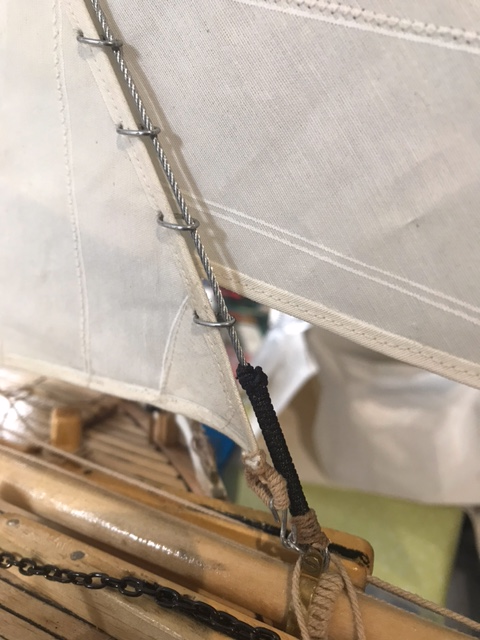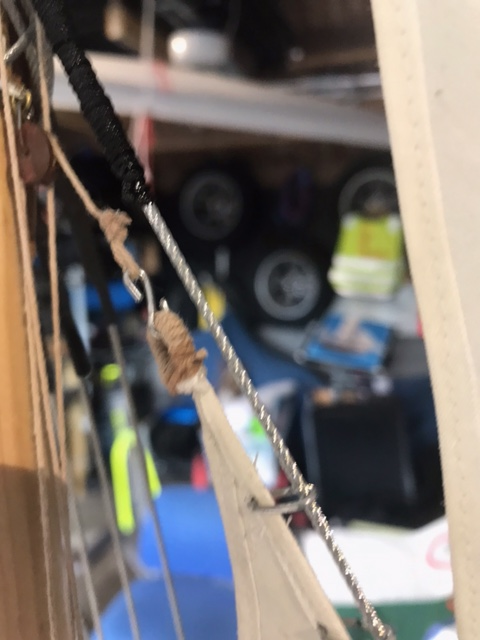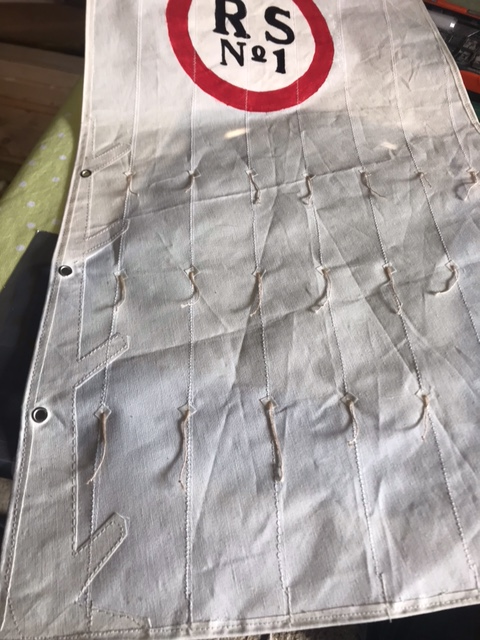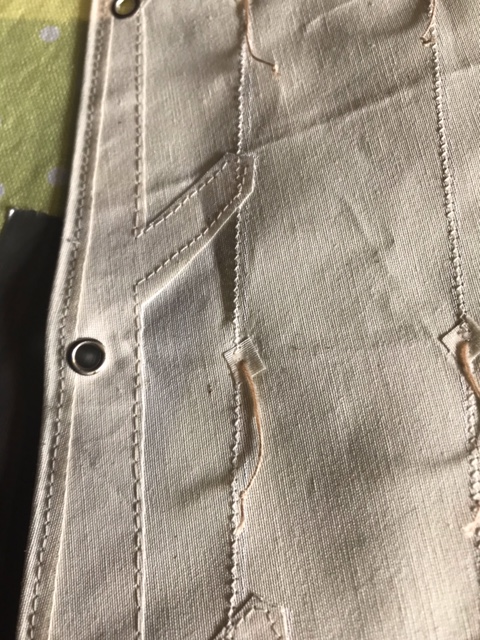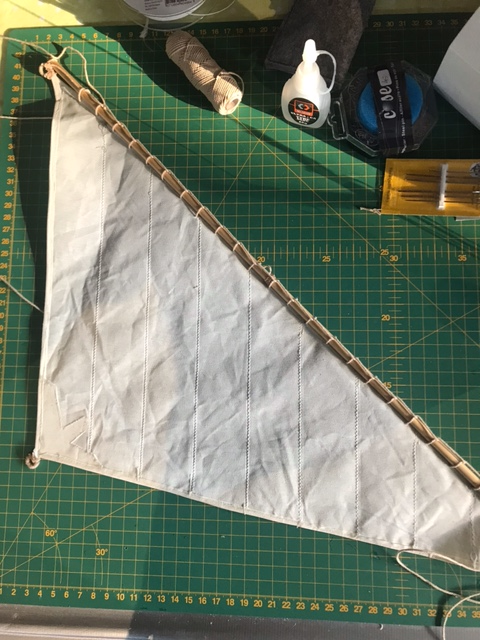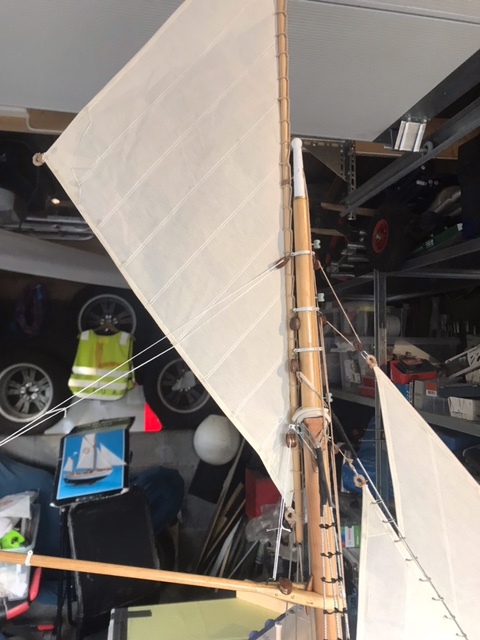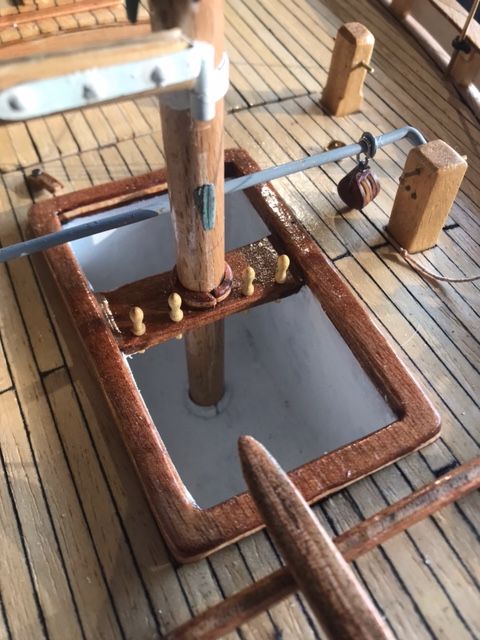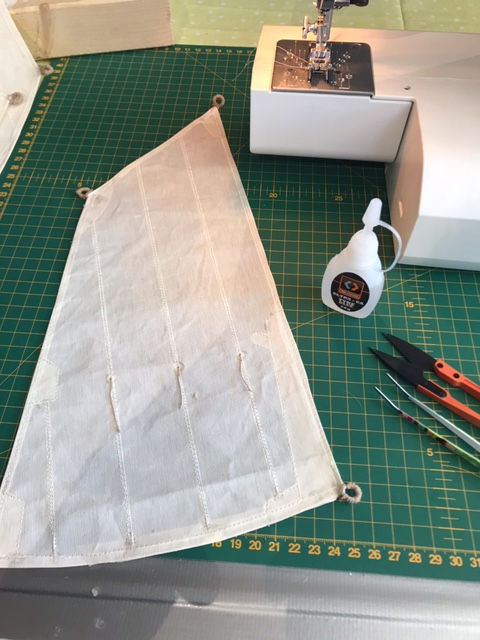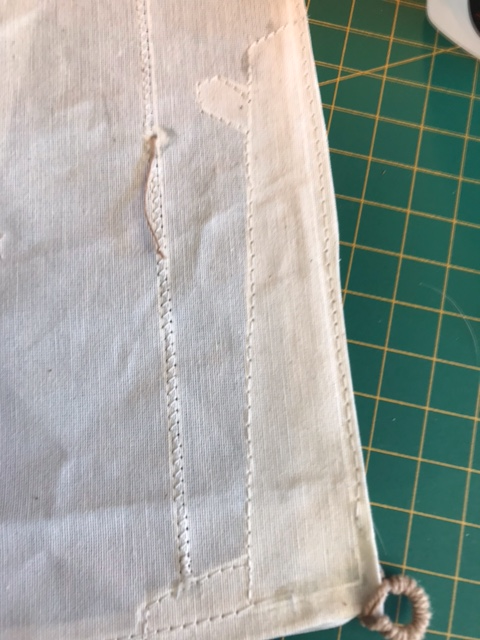
Frodo
Members-
Posts
53 -
Joined
-
Last visited
Content Type
Profiles
Forums
Gallery
Events
Everything posted by Frodo
-
Lovely build @Ekis. I do have a coupe of questions as I am about to build the same model: 1) Which technique do you use to nail/clink it? 2) Do you know if the rudder is cut of compared to the original. Again a great build model, thanks for sharing.
- 39 replies
-
- Billing Boats
- Finished
-
(and 1 more)
Tagged with:
-
Today I had to create some more details just because it is fun 6 old fashion fenders made from "jutetråd" (from corchorus-speci-plant), a rope made from hemp/hamp ("hampfenders" could be the English word?) A tiny anchor (old fashion grappling hook style), as I remember them from my childhood in small rowboats. And a fishing harp, measures about 17mm x 17mm.
-
Another update. I guess I'll have to say that both the models now are done "exteriorwise". Still need to do the RC-work and the interior of the Colin Archer, the Sarik "jolle" (dinghy) I consider to be complete. The stands for the boats are painted with same color as the anti-fouling. I do however have a concern that the CA now weights close to 9 kg and it puts a lot of pressure on the hull while in stand, worst case it could "pop" the deck. Guess I will remove the leadballast to avoid damage while in the stand. Rig-top: The baseplate for the stand measures 38cm x 26 cm: The sail is just hoisted for photosession It will be lowered and packed while being pulled behind the mothership or on static display. Thanks for watching
-
Hi, and welcome. Indeed there is some "forward and backward" combined with trial and errors If you are referring to the wooden support I found this hidden in the manual (nbr 16 into 18mm pieces): Here is also a link to the instructions I found it in (2xpdf): https://www.billingboats.com/index.php/modelboats-footer/1/120/boats/discontinued-models/P-bb414-colin-archer-d
-
Reconsidering servo setup below deck. I could use a total of three servos incl mainsail if I want to/need to have separate controll of "jib" (flyer) and "stay sail" (inner foresail), however not necessarily... inspired by the "sailtails" youtube video: ... but then I'll most likely will have to remove the cabin/saloon...
-
The hole for the rudder linkage will be sealed for sure, hopefully I dont forget to do it... About the distance that the inner foresail and the klyver will move: Rope nbr 4/inner foresail: has a block originally on deck (blue circle), and I've kept it, so it gives a 50% reduction as you mention. The part of rope nbr 4 (in red circle) has been removed. The rope comes back from the a medium block attached to the clew of the inner foresail. However, this is theory... sailing in practice might give another truth
-
Posting some lessons identified so far, might prevent others from doing the same. The two following photos below shows the original setup for genoa sheets, it will for sure not work properly. However, if I skip the "dead-eye" on deck and take the sheet straight from the genoa via the deckblock, then I get approx. the same traveldistance on the servo as with the "klyversail". And I will get rid of the two blocks attached to the cleat on the sail... that could work... in theory. I will give it a try. Another issue: The "loops" I made for sail sheets gets tangled up in other lines when I tackle. Therefore I need to find another solution. I am considering removing the "loops" on genoa and "klyversail", maybe made from eyelets. I also need to make the "harpoon" removable as it gets will get tangled up in the mainsheet.
-
Status as of now; I will continue to work on the RC-setup. I dont think the original genoasheets will work together with the "klyver seil" (the one most to the right). I'll try to post some photos on the issue a little bit later, but I think the mainissue is that the two sails dont have the same "leverage" (gear-exchange), and I was planning to put both sails on one servo... tbc...
-
I also suspect the RS1 to be a static, so I have also done some adjustments: Used 1,5mm steelwire as forestay (1mm should be enough, but couldnt find it in store). Used 10mm steel chainlinks on the genoa ("forre stengestagseil" in norwegian). Made "loops" at some of the sailcorners. Mizzen All sailedges are folded and glued with 1mm cordline in center, then sewn. Makes the edges stiff and durable I believe.
-
Hi, just an update on the CA-project with some random pics. Currently there are ropes and lines "all-around" as I'm figuring out how to do the RC-servo set-up. I've used ropes/lines from Billing Boats, Syren and Amati. I'll post some more pictures when things are less messy on deck in a few days. "Attaching" the lifebuoy I used a rope which was sewn onto the wire, I know the original is somewhat more robust, however I like the clean look. I'm not sure if the sheet for the genoa will work with RC-setup depicted below, I might have to simplify it. Hoops and loops in place on main mast, very time-consuming and demanding for fingers and eyes.... I guess the deck will require 2-3 more layers of lacquer. Made a little dinghy, but it became way to small (10 cm ish) for a 1:15 size, need to get a bigger one
-
An update on the sails, which now are more or less complete for mounting. It takes time "building" the sails, but it is great fun. I could not find any details on how to attach the sails to the rig so I improvised from my own experience. My solution might give others an idea of how they would have done it, so Im just posting some close up pictures. The two genoas: I decided to attach the rear genoa with 10mm chainlinks, as I find the small rings provided with the kit rather weak. 10mm chainlink has an opening of 8mm, the wire is 1,5mm and the chanlinks are approx 5mm from leading edge of sail, this give a small airgap of approx 1,5mm between the sailedge and the forestay. It is 20mm between each chainlink. Mainsail sewn with "reefropes": I used 4mm eyelets as reefeyes. I believe the reefeyes should be placed on the trailing edge made from rope, however this solution is close enough I'm considering to sew the edges of the eyelets with white thread. Topsail is "sewn" onto the topmast. About 20mm between each "ropeloop". The cordline in the fold is important for a strong edge to sew in:
-
Lately I've been working on the sails. It sure takes a lot of time as my sewingmachine skills are a little rusty. The mizzensail is complete. As mentioned in earlier posts I first folded and glued the edges with a 1mm white cordline as core. This provided a stiff and neat form to the sails. Then all the edges and patches are sewn. In the corners I have made "loops" to have as tack/clew points. I will not need a loop in each corner of the sails, but the can easily be cut of. The "cornerloops" are made of the excessive 1mm cordline which then were twinned in 1mm "brownish" thread...
About us
Modelshipworld - Advancing Ship Modeling through Research
SSL Secured
Your security is important for us so this Website is SSL-Secured
NRG Mailing Address
Nautical Research Guild
237 South Lincoln Street
Westmont IL, 60559-1917
Model Ship World ® and the MSW logo are Registered Trademarks, and belong to the Nautical Research Guild (United States Patent and Trademark Office: No. 6,929,264 & No. 6,929,274, registered Dec. 20, 2022)
Helpful Links
About the NRG
If you enjoy building ship models that are historically accurate as well as beautiful, then The Nautical Research Guild (NRG) is just right for you.
The Guild is a non-profit educational organization whose mission is to “Advance Ship Modeling Through Research”. We provide support to our members in their efforts to raise the quality of their model ships.
The Nautical Research Guild has published our world-renowned quarterly magazine, The Nautical Research Journal, since 1955. The pages of the Journal are full of articles by accomplished ship modelers who show you how they create those exquisite details on their models, and by maritime historians who show you the correct details to build. The Journal is available in both print and digital editions. Go to the NRG web site (www.thenrg.org) to download a complimentary digital copy of the Journal. The NRG also publishes plan sets, books and compilations of back issues of the Journal and the former Ships in Scale and Model Ship Builder magazines.


